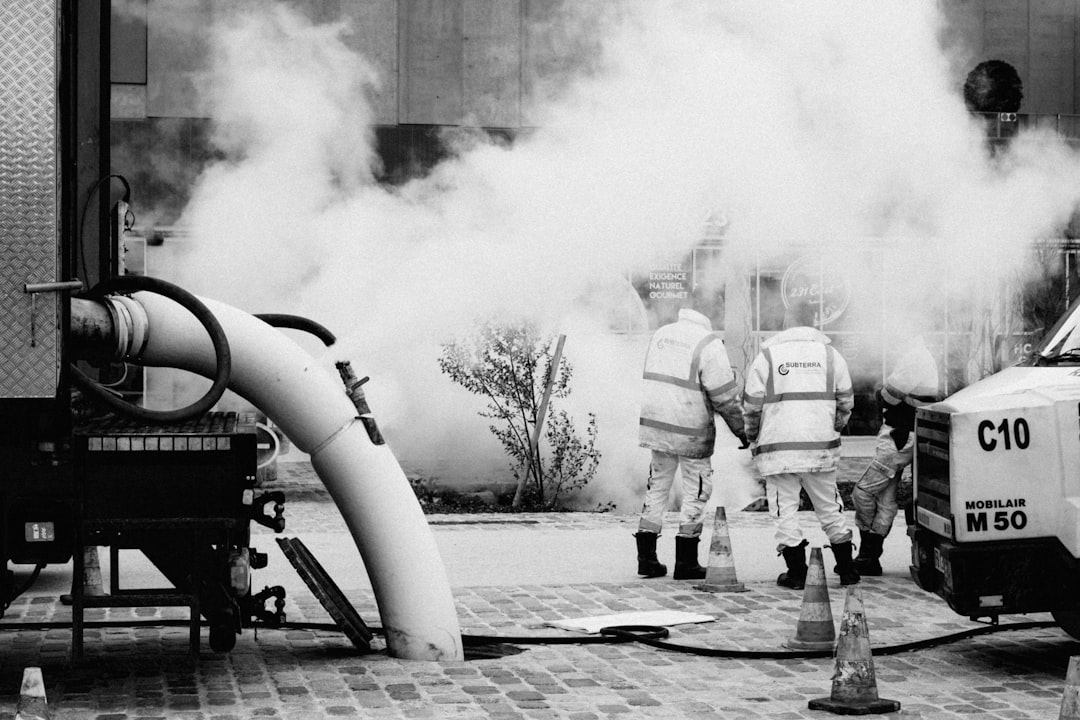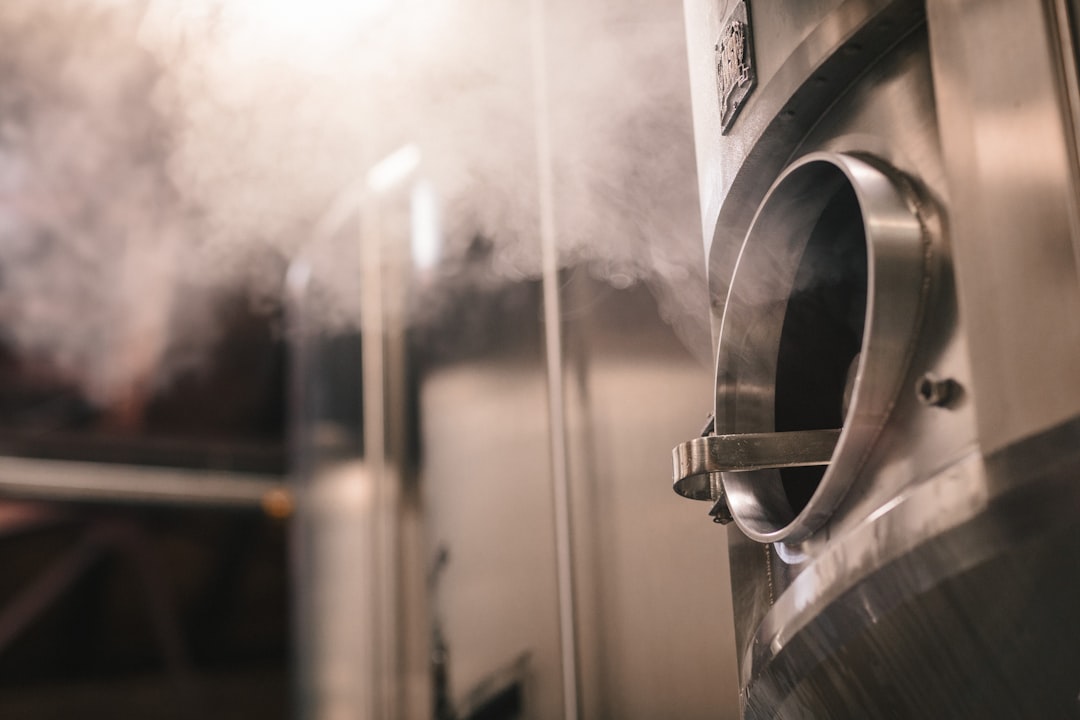

Engage prospects with a scan and streamline customer engagement with FREE QR code marketing tools by Sona – no strings attached!
Create a Free QR CodeFree consultation

No commitment

Engage prospects with a scan and streamline customer engagement with FREE QR code marketing tools by Sona – no strings attached!
Create a Free QR CodeFree consultation

No commitment
As demand for deeper, eco-friendly cleaning rises, steam cleaning services are stepping into the spotlight for both commercial and residential clients. High-temperature steam sanitizes surfaces without harsh chemicals, appealing to health-conscious homeowners, facilities teams, and sustainability-focused property managers. In addition to removing allergens and improving indoor air quality, steam cleaning lowers the environmental impact of routine maintenance by reducing chemical usage and waste.
Yet the growth opportunity is often limited by one persistent issue: missed or untracked demand. Prospects see a van wrap, skim a flyer, or speak with a technician, then move on without taking action. Paper brochures, generic phone numbers, and email addresses do not capture intent in the moment. Leads remain anonymous, response time drags, and sales teams struggle to attribute revenue to the physical materials they fund.
QR codes close this gap by converting offline interest into instant digital action. When placed on equipment, uniforms, door hangers, invoices, and signage, QR codes route scanners to booking forms, safety certifications, and demonstration videos. Each scan is trackable and attributable, so you learn which placements and messages actually drive revenue. In the pages that follow, you will find practical, data-driven ways to deploy QR codes across steam cleaning operations, boost lead capture, and measure impact while improving customer experience.

Steam cleaning businesses frequently struggle to efficiently capture leads, especially from clients who interact with field teams, vehicles, or printed assets but never fill out online forms. Dispatch may hand out flyers during estimates, or crews may leave behind paper checklists after service. Without an immediate digital action, valuable prospects remain anonymous and competitors engage them first.
QR codes bridge this gap by meeting people where attention is highest and reducing friction to zero. A single scan can open a pre-filled booking form, launch a short video explaining steam’s sanitization power, or trigger a call with a sales rep. With dynamic QR codes, destinations can be updated seasonally or by campaign, while scan analytics reveal engagement by location, time, and device. This lets you continuously refine placements and calls to action to lift conversion rates and shorten sales cycles.
With the right QR workflows in place, steam cleaning teams capture interest when it spikes, engage prospects with tailored content, and feed the pipeline with measurable, high-intent leads. Platforms like Sona QR centralize code generation, dynamic updates, analytics, and CRM integrations, making this shift from paper to performance both simple and scalable.

For steam cleaning providers, delayed or incomplete data from physical channels results in losing sight of high-intent prospects and missing upsell opportunities with existing clients. Paper service lists, static phone numbers on van wraps, or after-care pamphlets make it hard to attribute interest or revenue. You may suspect that door hangers perform well in certain neighborhoods or that trade show brochures bring in facility managers, but without trackable entry points you are guessing.
Dynamic QR codes transform every offline touchpoint into a measurable digital interaction. You can swap seasonal offers, update safety certifications, or change a landing page without reprinting. More importantly, each scan becomes an identifiable event linked to a channel, location, and timeframe. That creates a direct line between a physical asset and outcomes like booked appointments or maintenance plan sign-ups.
By connecting the physical presence of your team to a measurable digital experience, QR codes create a single view of engagement. Leaders can track pipeline influence, forecast with more confidence, and direct spend toward what actually drives revenue.

Steam cleaning services operate across diverse settings, from residential living rooms to commercial lobbies. QR codes can flex to fit each scenario, delivering the right action with minimal friction. The formats below are the most useful for owner-operators, multi-crew providers, and commercial teams.
With dynamic management using tools like Sona QR, you can update destinations, rotate promotions, and centralize analytics without reissuing codes. That keeps messaging current and ensures that no scan or upsell signal slips through the cracks.
Growth hinges on surfacing and nurturing interest wherever it occurs. Too many steam cleaning providers rely on a handful of marketing tactics, then miss the signals created by day-to-day operations. QR codes make those hidden touchpoints visible and actionable.
When you distribute QR codes across these high-impact placements, you turn everyday operations into a live testing ground. Over time, you will build segmented audiences by service type and location, then invest heavily in what works.

QR-enabled workflows convert the most common interactions of a steam cleaning business into revenue-driving moments. By aligning each use case with a clear business outcome, you create a repeatable system for capture, conversion, and follow-up.
Each of these use cases ties a physical asset to a measurable digital outcome. As you deploy them, tag scans by channel and incentive so you can identify which combinations create the highest lifetime value.
Every scan captures intent, context, and behavior. When your QR code strategy covers multiple journey stages, you build a granular map of who is engaging and why. This lets you retarget with precision, reducing wasted spend and increasing conversion to booked appointments or contract renewals.
Start by aligning codes to life cycle stages. Awareness codes belong on van wraps, community flyers, and trade show signage. Consideration codes fit brochures, demo stations, or comparison guides. Conversion codes work best on pricing sheets, promo cards, or invoices. Label each code in your QR platform and CRM with campaign, location, and audience attributes so you can analyze performance and route leads appropriately.
With Sona QR, each code becomes a smart gateway that writes high-quality data to your systems. That data powers behavior-based audiences you can nurture over time until a scanner becomes a repeat customer or contract client. For step-by-step tactics, see Sona’s Playbook titled intent-driven retargeting: driving high-impact campaigns with first-party intent signals.
QR codes are the connective tissue of a modern marketing program. They unify offline impressions with online engagement and give you the analytics to make confident decisions. In steam cleaning, where vehicles, crews, and physical materials drive most awareness, QR codes ensure every channel is accountable to outcomes.
Centralized platforms like Sona QR make it easy to manage all codes, monitor performance across disparate media, and sync scan data to your CRM and ad platforms. Your offline touchpoints become a measurable onramp into a connected funnel.
Successful QR deployment requires clear goals, strong creative, and disciplined measurement. Treat each QR code like a mini product launch: define success, test rigorously, and iterate based on data. The steps below provide a repeatable framework you can use for a single campaign or to roll out codes across the entire operation.
Before you begin, clarify which business outcomes matter most. For owner-operators, it might be faster booking and more reviews. For commercial teams, it could be demo scheduling and contract renewals. Build your QR strategy to support those outcomes with the least friction and the highest trackability.
Close each campaign with a short retrospective. Document what worked, what did not, and what to test next. Over time, this creates a performance playbook that accelerates growth and reduces wasted spend.

A recurring pain point for steam cleaning providers is attributing revenue to specific offline materials and field interactions. You may know that door hangers generate calls or that the van wrap drives website traffic, but without reliable tracking you cannot prove it. That makes budget allocation difficult and slows down learning cycles.
Sona is an AI-powered marketing platform that turns first-party data into revenue through automated attribution, data activation, and workflow orchestration. Scan-level data changes the equation. When every QR code uniquely identifies a placement and campaign, you can see not only who scanned but also how that engagement influenced pipeline and revenue. Tools like Sona QR and Sona link scans to downstream behaviors such as form fills, appointment scheduling, and closed-won deals. For deeper context on measurement, read Sona’s blog post titled the essential guide to offline attribution: maximizing ROI through offline channels. Identity resolution and multi-touch attribution connect previously anonymous scans to known contacts when they later fill a form or click an email.
When your team can connect scans to revenue, QR codes evolve from a convenience to a performance engine. Leaders gain visibility, sales gets better-qualified conversations, and marketing proves its value with precision.
The best QR programs keep improving through disciplined testing and operational alignment. You do not need a complex martech stack to start, but you do need consistent execution by field teams and a commitment to measurement. Use the tips below to expand your impact quickly.
Focus first on the physical media you already deploy at scale such as vehicles, invoices, and door hangers. Add clear CTAs and incentives to catalyze scanning, then build automation to continue the conversation. Over time, layer in more creative applications such as QR-enabled loyalty cards for commercial clients or on-site training modules for facilities teams.
Treat each idea as a small test with a clear success metric. If it works, scale it. If not, replace it. Over several cycles, your QR ecosystem will become a reliable source of quality demand and customer insight.
Industry leaders frequently report that their biggest growth unlock came from turning passive impressions into measurable actions. One regional brand that added trackable QR codes to van wraps recorded a meaningful lift in inbound estimate requests within two months, which they tied directly to scans during weekday route hours. Another provider embedded survey and review codes on invoices and thank-you cards and saw their monthly testimonial volume double. Those reviews fed local SEO and gave sales teams fresh social proof for commercial pitches.
Buyer trust increases when proof is easy to access. In internal surveys among service buyers who prioritize sustainability, a large majority reported more confidence when they could scan a QR code to view eco-certifications and safety data without a phone call. Direct mail featuring a code that linked to a personalized scheduling portal has also been shown to outperform generic postcards, with materially higher conversion from scan to booked appointment compared to print-only mailers.
The consistent pattern across these examples is simple. QR-enabled experiences shorten the path from curiosity to commitment while creating data you can act on. Companies that operationalize these practices build compounding advantages: better attribution, faster iteration, and a brand experience that feels modern, transparent, and customer centric.
QR codes are transforming how steam cleaning services capture demand, prove impact, and improve customer experience. What used to be a collection of untrackable touchpoints is now a connected system that guides prospects from awareness to booking in a single scan. Each physical surface becomes a gateway, each scan a signal you can measure and nurture.
The firms that lean into this strategy will outlearn and outpace competitors. They will know which neighborhoods respond to which offers, which assets pull their weight, and which moments matter most for conversions. Most importantly, they will replace manual, error-prone steps with seamless digital flows that respect the customer’s time and preferences.
If you are ready to close the gap between offline interest and online action, start by adding QR codes to your most visible assets and measuring the results. Tools like Sona QR provide the dynamic updates, analytics, and CRM integrations you need to manage codes at scale and connect scans to revenue. Build your first campaign, learn from the data, and expand. Start creating QR codes for free.
QR codes have transformed steam cleaning services from traditional, manual processes into efficient, customer-centric experiences that drive measurable growth. Whether it’s streamlining service scheduling, delivering instant access to cleaning instructions, or enabling real-time feedback, QR codes empower providers to enhance client satisfaction and operational efficiency simultaneously. Imagine clients effortlessly accessing personalized service details or maintenance tips right from their smartphones, boosting trust and repeat business.
With Sona QR, you can create dynamic, trackable QR codes tailored for your steam cleaning business—update service info instantly without reprinting, monitor customer engagement, and link every scan directly to increased bookings and loyalty. No more guesswork, just actionable insights that turn every code into a powerful driver of customer acquisition and retention.
Start for free with Sona QR today and transform how your steam cleaning services connect with customers—making every scan a step toward growth and lasting success.
Steam cleaning services sanitize surfaces with high-temperature steam without harsh chemicals, remove allergens, improve indoor air quality, and reduce environmental impact by lowering chemical use and waste.
Steam cleaning uses high-temperature steam to sanitize and clean surfaces deeply without the need for harsh chemicals.
You can find reputable steam cleaning services by looking for providers that use trackable QR code systems for booking and customer engagement, or by searching local listings and checking for providers who emphasize eco-friendly and measurable service options.
Steam cleaning services can clean a variety of surfaces including carpets, upholstery, tile and grout, commercial floors, and other hard-to-clean materials in residential and commercial settings.
The article does not specify exact costs, but using QR codes linked to instant estimate forms can provide quick and accurate pricing information directly from steam cleaning service providers.
QR codes convert offline interest into instant digital action by routing scanners to booking forms, videos, or contact info, making lead capture measurable and reducing friction in the customer journey.
Useful QR code formats include web links to booking or FAQ pages, vCards for contact info, SMS or email pre-fill for inquiries, Wi-Fi access codes for crews, and app download links for customer apps.
QR codes should be placed on vehicles, uniforms, equipment tags, printed materials like brochures and invoices, door hangers, commercial site signage, and direct mail to capture leads at high-intent moments.
Tracking scans provides actionable data such as scan volume, location, device type, and conversion rates, helping providers optimize marketing spend, improve campaigns, and attribute revenue accurately.
Best practices include defining clear goals, choosing static or dynamic codes based on content, branding codes with CTAs, testing across environments, deploying on high-impact channels, tracking performance, and iterating based on data.
Use Sona QR's trackable codes to improve customer acquisition and engagement today.
Create Your FREE Trackable QR Code in SecondsJoin results-focused teams combining Sona Platform automation with advanced Google Ads strategies to scale lead generation

Connect your existing CRM

Free Account Enrichment

No setup fees
No commitment required

Free consultation

Get a custom Google Ads roadmap for your business






Launch campaigns that generate qualified leads in 30 days or less.
